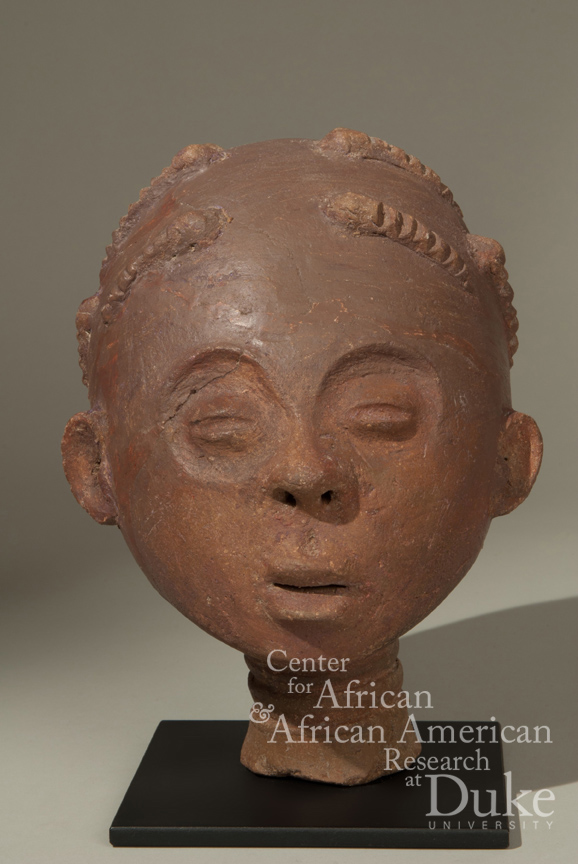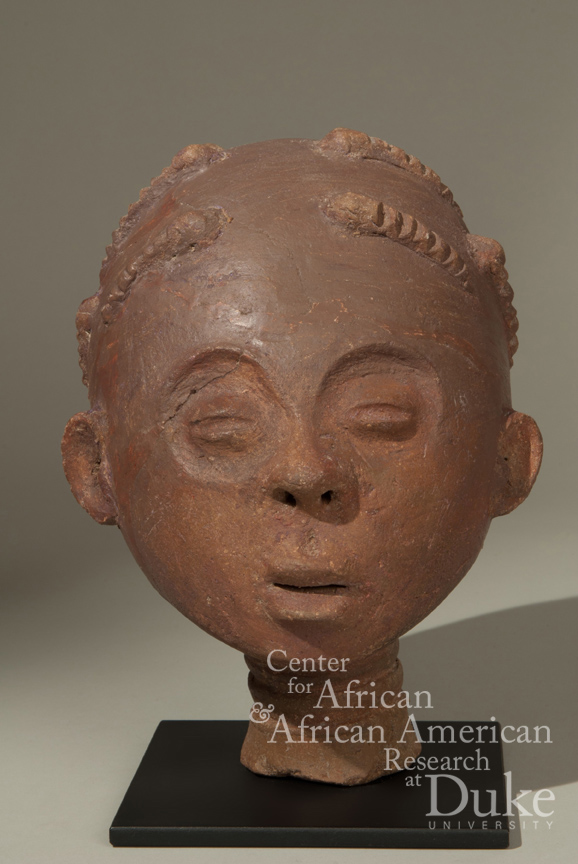



6.43" x 6.62" x 8.58"
163.24 mm x 168.14 mm x 218.04 mm
This funerary bust (known as a Nkua in the Akan langauge) exemplifies two prominent forms of visual culture among the Akan-speaking peoples of Southern Ghana and Southeastern Côte d’Ivoire: objects made of clay, and those used in funerals. Clay artifacts are some of the most plentiful found in archaeological digs in the region. In funerary busts, unbaked clay and terra cotta link the bust and the grave, both earthen constructs. Clay itself is sacred due to its association with Asaase Yaa, a female earth divinity. Other forms of art associated with Akan funerals are urns, stools, dance, drama, and music. Funeral busts may range in size from seven centimeters (2.75 inches) to life size.
Terra cotta heads such as this use different stylistic conventions from wooden Akan figurative sculptures, as artists of each medium stress different parts of the human anatomy. The manufacture of funeral busts likely spread from the seventeenth century with the expansion of the Akwamu empire. Indeed, the spread of artistic practices that accompanied circuits of war and trade during this period make it difficult to identify the origin of any particular busts without knowing its particular history. These busts are often naturalistic likenesses of a particular deceased person, although others are more abstract. Similar objects depict minor deities or serve as pot lids, and distinguishing such objects from funerary busts can be difficult without knowing how each object was used in its original context. Today, many Ghanaians use cement sculptures as grave markers, a practice that hearkens both to European and North American cemetery practices, but which also stems from the use of terra cotta busts. Contemporary Ghanaian artist Oku Ampofo has referenced Akan funerary busts such as this in his sculpture.
Contact
Sacred Arts of the Black Atlantic Project, Duke University
Box 90091
Durham, NC 27708
Email
jm217@duke.edu